Seiko MM300 SBDX017 Discontinued – Get It While You Still Can
Earlier this year, Seiko let us know that the Marinemaster 300 SBDX017 will be discontinued. And it now is. The limited edition Seiko SLA019J can be seen as successor, but it is a limited edition. We’ve been raving about the Marinemaster 300 for a long time now, it is a great diver with an incredible value for money. Although it has been discontinued, you still might find them for sale at your Seiko dealer. Before they run out of stock, we suggest you seriously consider buying one if you want a diver that’s close to perfect. Especially at this price point. There’s a reason four out of six Fratello members have bought one. To inspire you a bit more, read Mike’s review on the SBDX017 that he wrote exactly two years ago.
– RJ
It’s funny, out of all the Seiko divers I either own or have lusted after; I’ve always held what seems to be one of the brand’s most desirable models in a rather casual regard. The watch that I’m referring to is none other than the classic Seiko MM300, or Marinemaster. So, having passed this watch by countless times in Japan in its previous form – as the SBDX001 – I felt it was overdue to spend some quality time with the model now that Seiko has given it some very light updates in order to create what is know coded as the SBDX017. Firstly, I want to thank the Seiko Netherlands crew for sending me the watch and allowing me to hold onto it for several weeks. So, now, let’s take a deeper look at the updated MM300 and I’ll attempt to put the watch in perspective and, finally, let you know if it’s something I’ll pay more attention to in the future.
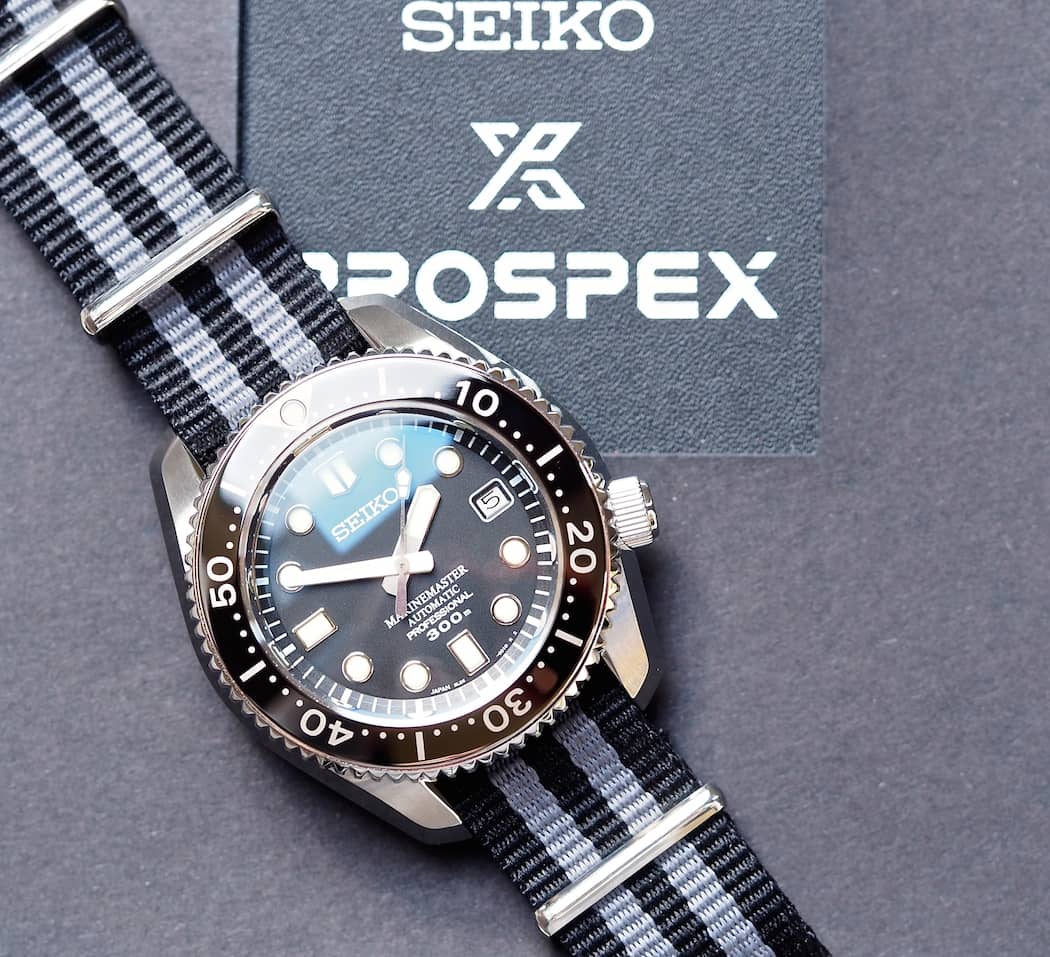
The Seiko MM300 on top of its simple box
Why I’ve never owned a Seiko MM300
It’s funny that in all of my trips to Japan – and there have been quite a few – I always went with the intent of finding some other “JDM-only” watch. There was the “Emperor Tuna”, the vintage “6159 Grandfather Tuna”, a manual wind Grand Seiko, and even a Casio Frogman. However, despite it being JDM and arguably the most classic looking of Seiko divers, I never once tried on or considered buying a Seiko MM300. I suppose the primary reason for this disregard was that I was after things that truly registered as funky or odd – hence, the Tunas – or perhaps it was because I was hunting vintage Seiko divers that bore a strong resemblance to the MM300 such as the 6217 or the 6105’s and wanted to throw money of a similar value in these directions. Still, though, as one who has worked to compile a relatively exhaustive collection of Seiko Divers, was I wrong to ignore the MM300 and its importance in the lineage for Seiko? Many would argue with a firm “yes”.
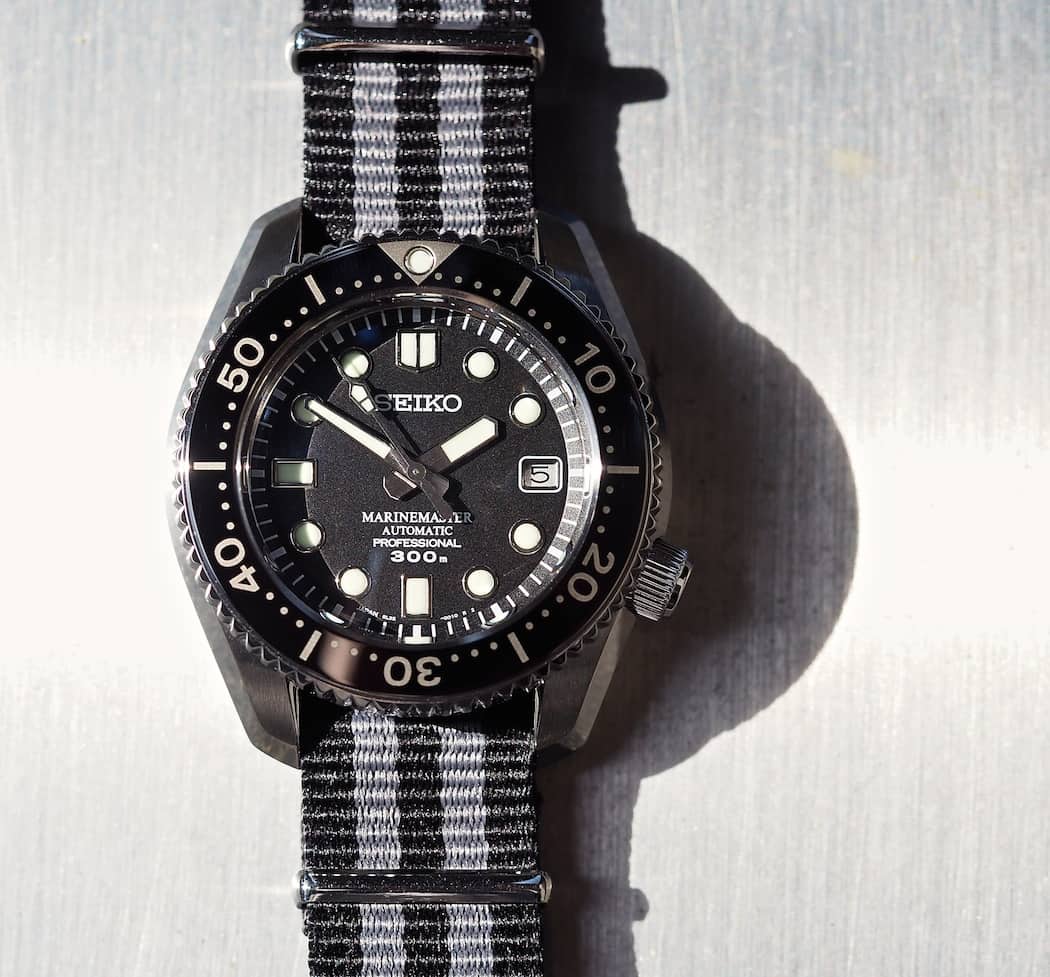
The Seiko MM300 features a big protruding screw-down crown – it’s easy to grab
Take our own Robert-Jan as an example. He’s a “dyed in the wool” Speedmaster fan and of basically all things Omega. Yet, when it’s time for vacation or even during some highbrow events, he often dons the Seiko MM300. Call it a gentle thumbing of the nose to the European establishment or, perhaps, receiving a knowing glance because he’s actually the one at such bespoke events wearing the truly in-house watch that retails for a relatively paltry 2350-Euros on the Continent (bargains exist in Japan, big-time) versus so many other divers that feature me-too engines and cost multiples more. Take Jason Heaton, a friend of the show, who drops his prose in multiple arenas and co-hosts The Grey NATO podcast. He’s a diving fanatic and he highly recommends the MM300 and has mentioned that it’s a watch he’ll often bring as his only wear on long trips. So, what have I been missing?
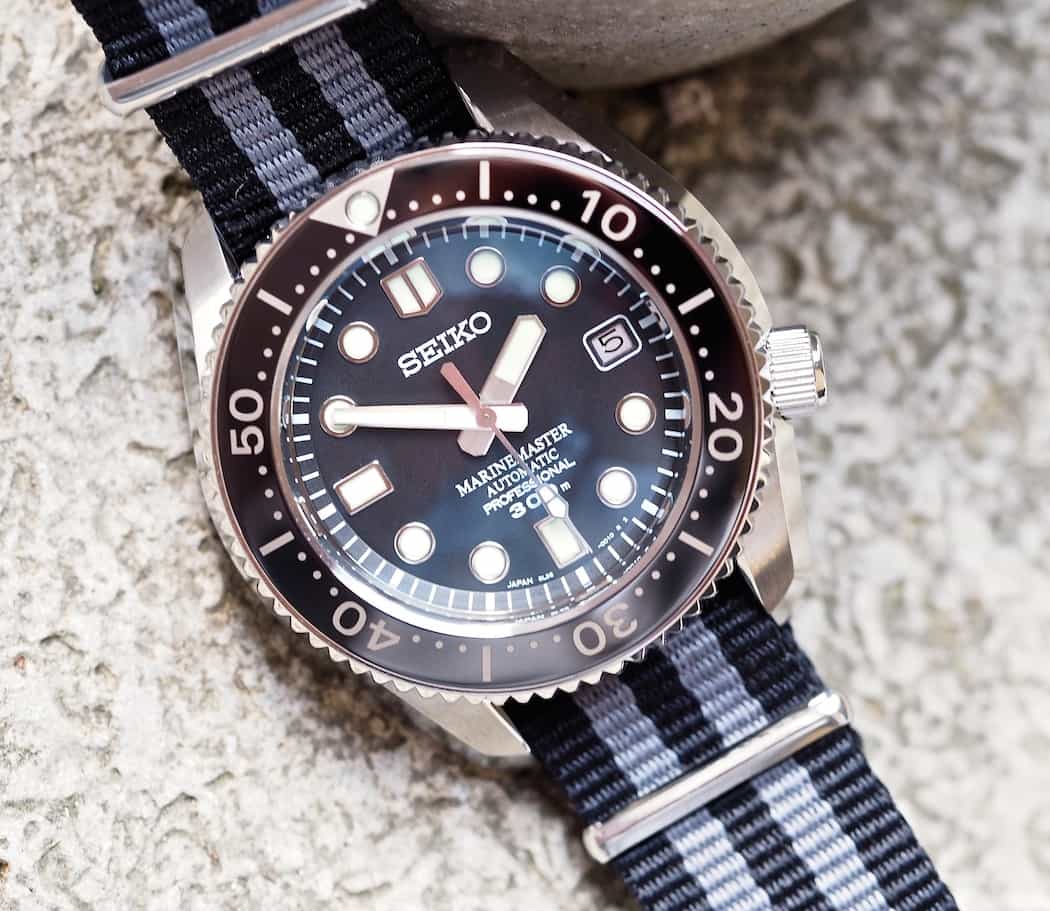
The Seiko MM300 features a deeply set dial…take a look at the steep inner bezel
How the Seiko MM300 fits within the brand’s history
Before we talk about this newest rendition of the Seiko MM300, maybe it’s a good idea to bring this watch into historical perspective and align where it fits within the Seiko diver timeline. Like most family trees, things start simply enough but often branch out in all sorts of directions. In 1965, Seiko debuted the now legendary 6217 “62MAS” with a rotating outer bezel and 150m of water resistance. The 62MAS set a design standard, dial-wise, that Seiko essentially follows today. After the 62MAS, though, and in the late 60’s, Seiko started to branch out with its divers into what I’d call the more capable saturation diver pieces, Seiko would argue that all of the watches I’ll mention were professionals, and their slightly less capable line. If we explore Seiko’s lighter side first, the brand introduced 150m pieces in the late 60’s under the 6105 reference. The 6105’s were ultimately replaced by the favorite 6309 “Turtle” and then were followed by the 7002 and ultimately the SKX007 that we have today. On the more serious side (saturation divers), the brand created the 300m 6215 and 6159 models that visually provide direct lineage to the MM300 you see before you. The Tunas ultimately replaced these in the 1970’s and have continued on through today with greater depth resistance and an array of movement and case material choices. We won’t even get into the historic sport divers or the rest of the Prospex line with the Monsters, new Turtle, etc. Specifically regarding the MM300, Seiko introduced the original SBDX001 in the early 2000’s as part of its saturation diver line and I’d like to think we should consider it as the brand giving the people what they wanted – an accomplished diver that looks and wears a bit more practically than the Tunas. Now that we’ve come full circle, if we consider the introduction of the MM300 over 10 years ago, it was time for Seiko to make some changes. Enter the SBDX017.
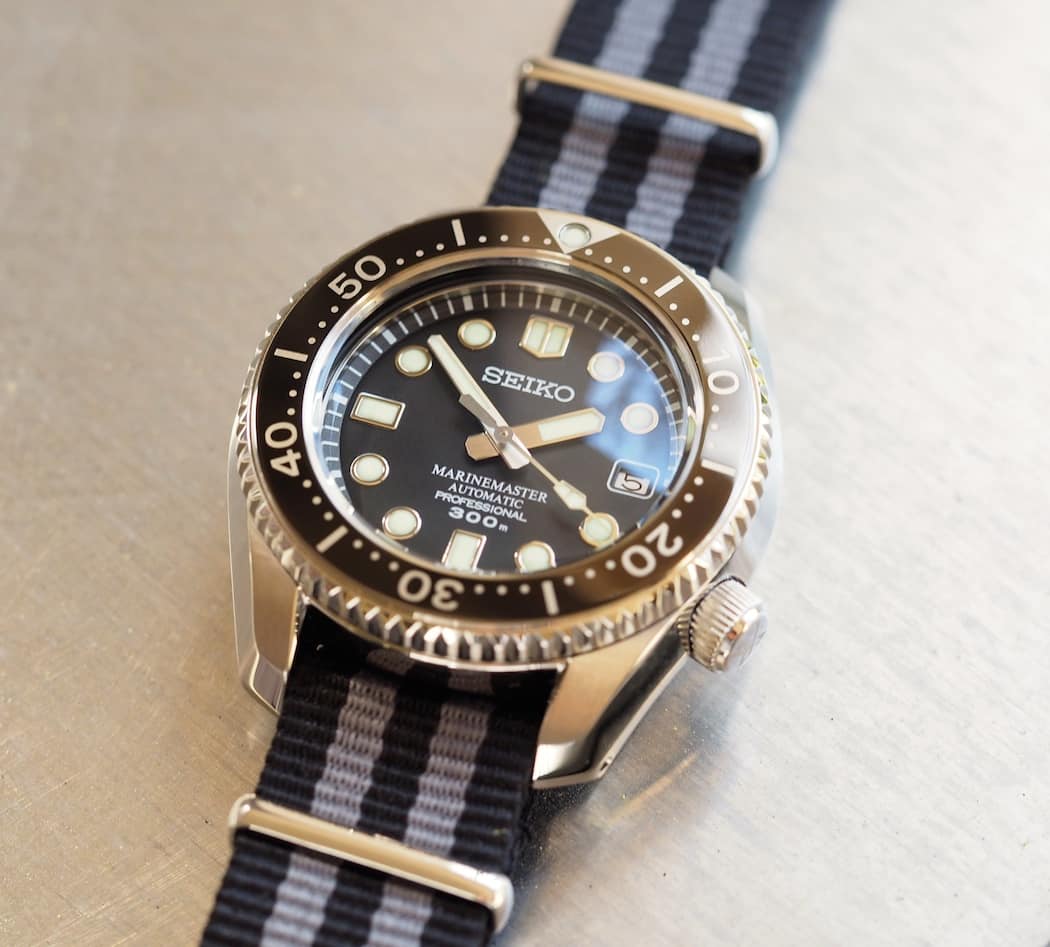
The Seiko MM300 has what I’d call a non-obtrusive date window
The Seiko MM300 SBDX017 – very subtle updates
In updating the Seiko MM300, the brand from Japan made some very subtle changes to what has truly been a winning formula. The same 44mm stainless steel case remains with its beautifully subtle sculpting, as does the painted steel bezel and 8L35 automatic movement with date. In a move that shows that the brand moves very carefully, the brand’s own Hardlex mineral glass remains as the odd choice of crystal material for the watch whereas the rest of the expensive Prospex saturation divers see sapphire. Coming back to the movement, this is really one of the stars of the show. It’s made alongside Grand Seiko movements and is placed in the top tier Tuna watches as well. In the 8L35 designation, though, it is sans decoration but keeps all the function such as hand winding and hacking. Plus, in the SBDX017, it now has parts made with MEMS technology, which refers to tighter tolerance pieces that should allow for better timekeeping and less wear over time. It’s a true gem of a movement and easily comparable to the best diver movements from anywhere in Europe. With a power reserve of 50 hours, it’s also something that can be put down for a couple days without missing a beat.
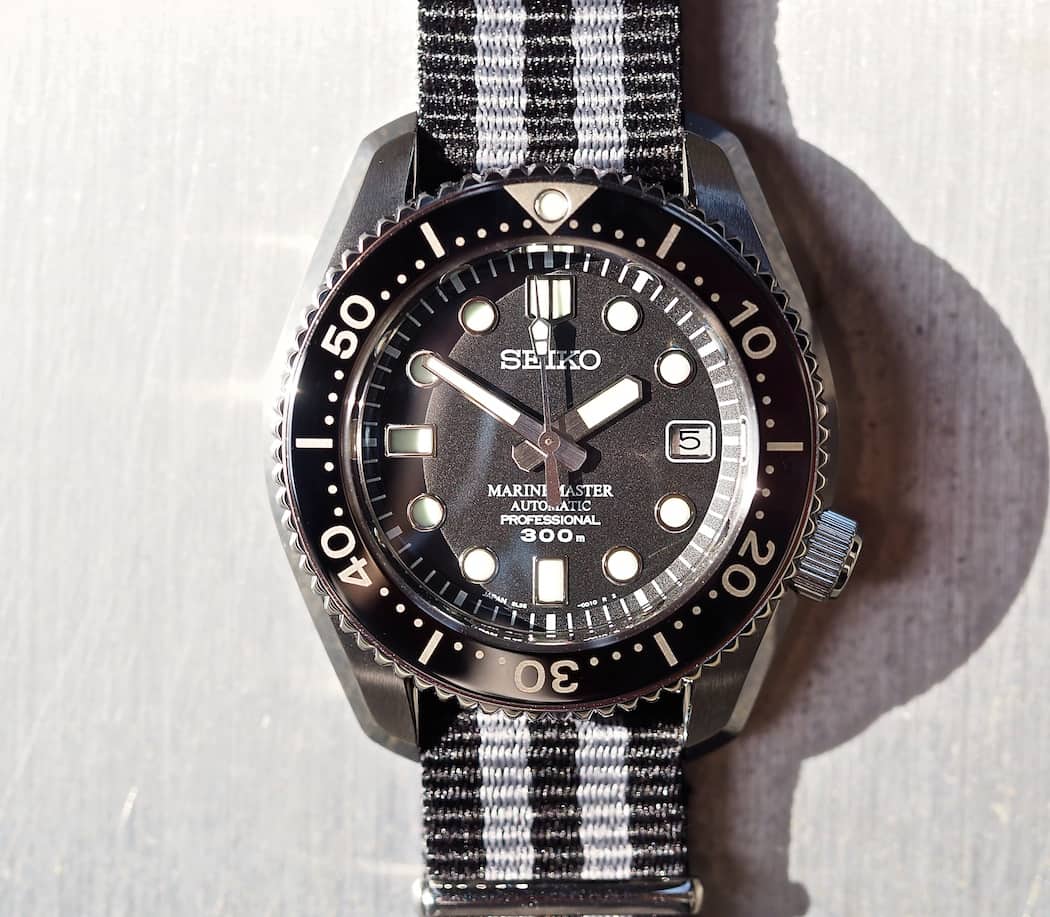
Legibility – in light or darkness is no issue with the Seiko MM300 SBDX017
The few other updates to the Seiko MM300 are what I’d call “skin deep”. First off, the dial apparently receives brighter and longer-lasting Lumibrite lume. Seiko’s luminescence is legendary, so they’ve essentially just gone and one-upped the competition that was already lagging.
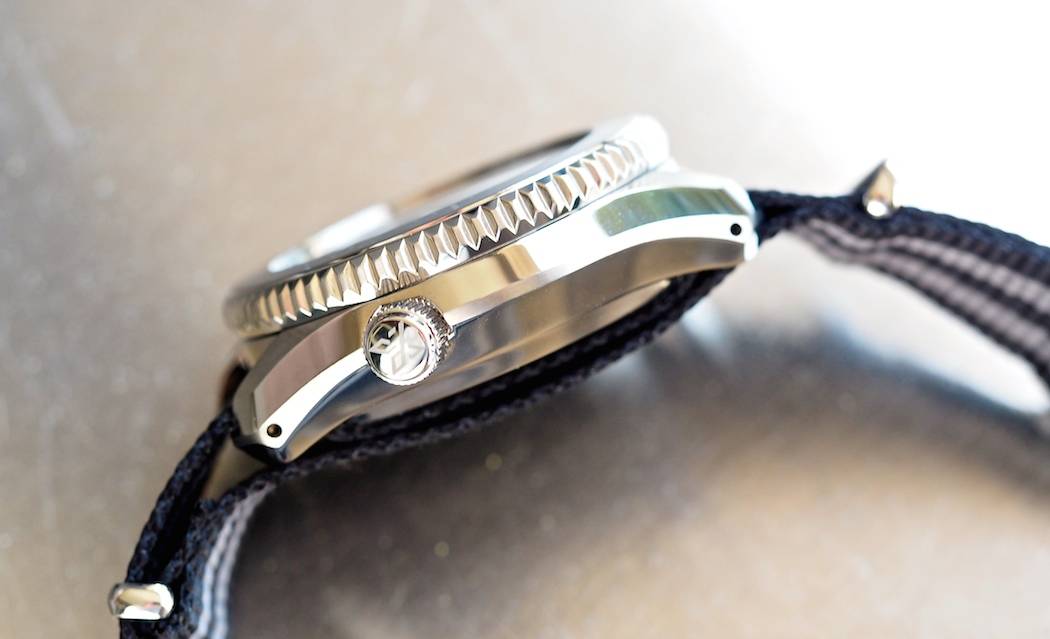
Note the addition of the Prospex “X” on the crown of the Seiko MM300 SBDX017
We also see the addition of an “X” for Prospex on the crown. Some fanatics out there are having a tough time with this, but to be honest, if Seiko had to add this, I’m happy that they kept the branding to the crown and left the classic dial alone. It’s honestly not a real annoyance and, again, I can’t fault the company for wanting to tie this desirable piece to the rest of the line. It even serves to make the rest of the Seiko Prospex divers that much more credible.
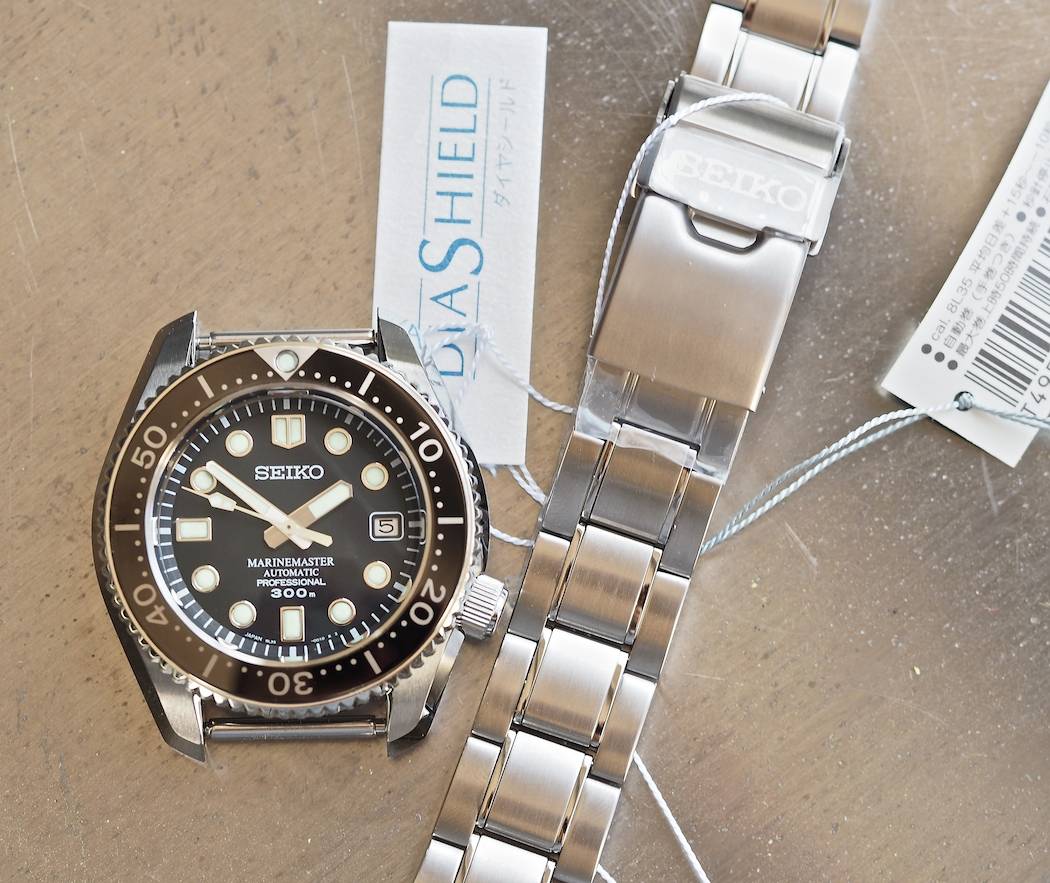
As received, the Seiko MM300 and its stainless bracelet
Finally, the “big” news for the update is the use of Seiko’s DiaShield coating on the case and, I believe, the bracelet. This is basically a DLC coating that is normally used by the company on its titanium watches in order to provide scratch-protection and an extra dose of corrosion resistance. It’s a very subtle addition, but – but, but, but – I’ve done some reading on various forums and those who have lived with DiaShield sing its praises. The treatment works…and for most of us who desk dive all day, I think it’s actually a welcome addition. For those who like to pick up character scratches – at their desk or under the surface – perhaps they’ll be disappointed, but to me this is a very nice and understated way of employing useful technology.
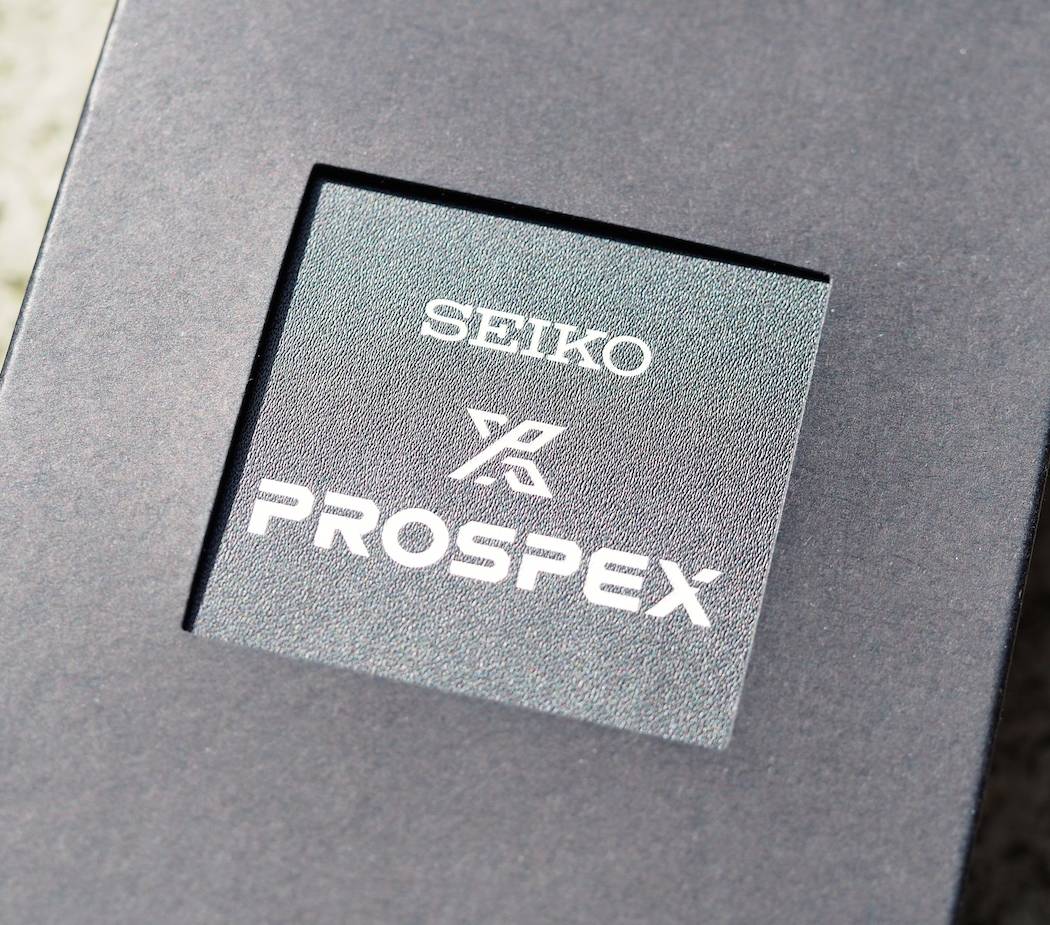
The simple box from the Seiko MM300 – it looks more like something that would house dive equipment – and it does!
The Seiko MM300 – my impressions
So, as you can see, not much was really changed on the Seiko MM300 with the SBDX017 versus its prior incarnation as the SBDX001. Some may have been looking for more, but it seems most weren’t looking for any change at all and you can’t blame Seiko for sticking with what works. Specifications aside, what do I think of it? Well, when I received the watch, it came in the typical cardboard-sleeved box and contained the SBDX017 on a steel bracelet and waffle-style rubber strap. It’s a very basic package that wouldn’t look out of place in a dive shop next to regulators or other equipment – and I actually think that’s pretty cool. This is definitely a no nonsense, real dive watch without pretense. I’ll just hit upon the strap/bracelets quickly because you’ll see I didn’t really use them. First, I was a bit conscious of the fact that this watch was delivered as new and I really didn’t want to impose any wear on these pieces.
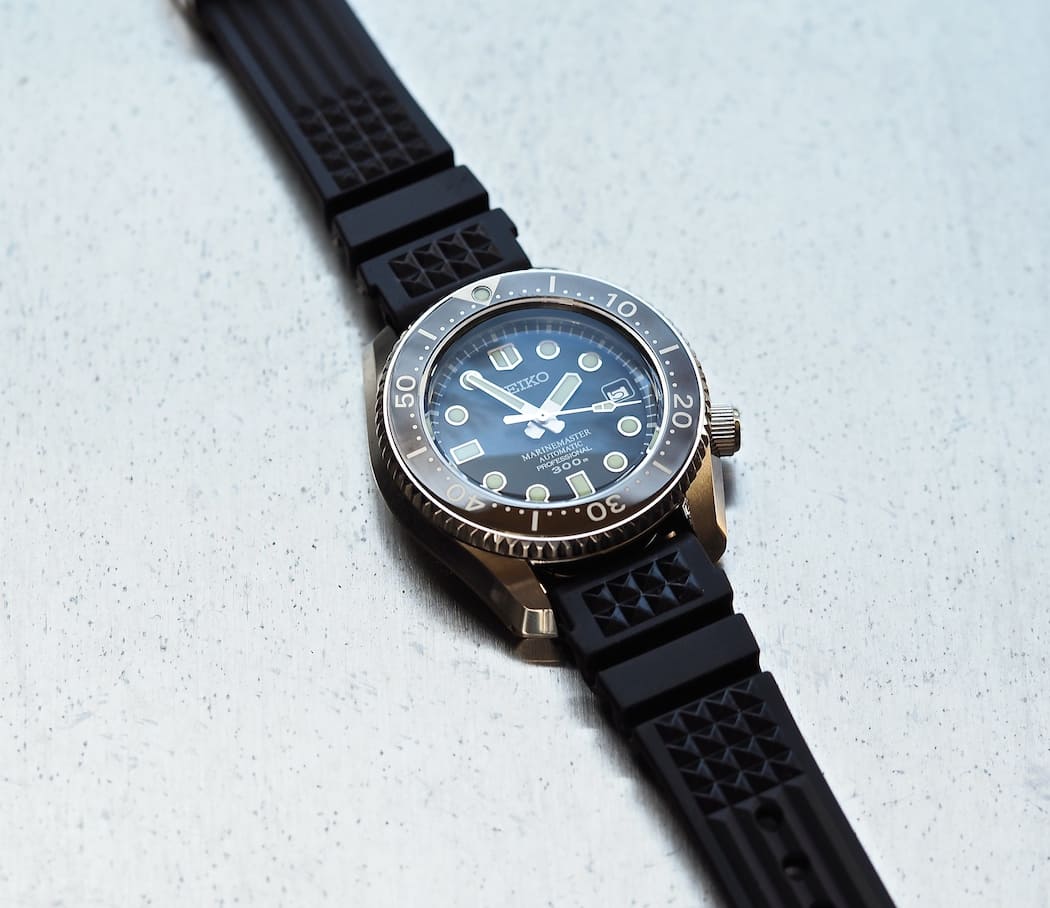
The Seiko MM300 on its waffle strap
Still, the waffle strap, as much as it is historically relevant, was way too long for my wrist and certainly more suitable for someone wearing a dry suit. Plus, I did find it a little “plasticky”.
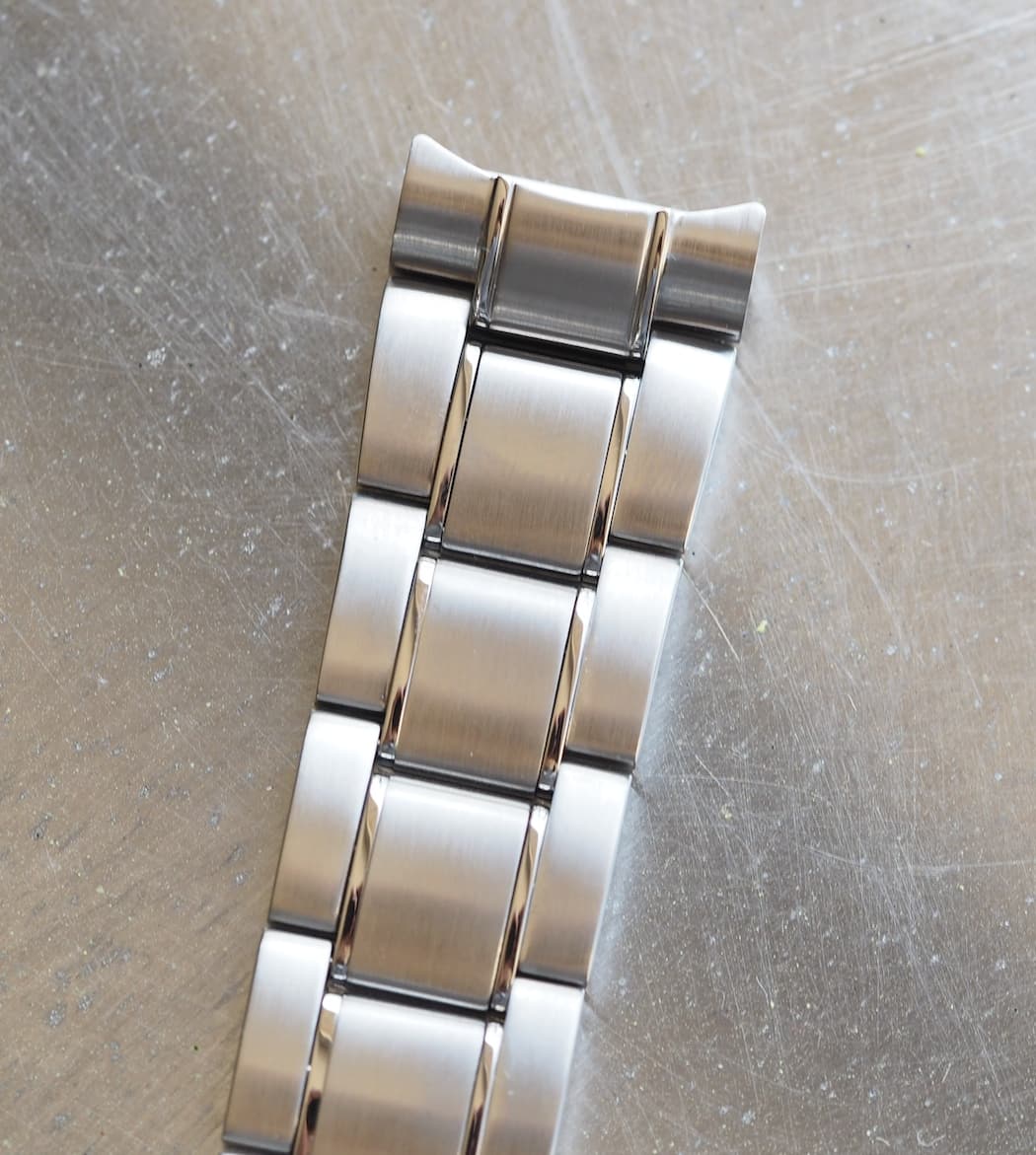
A closer look at the Seiko MM300 bracelet
The bracelet, on the other hand, I find far more attractive than Robert-Jan does. True, I don’t like the small polished links within because I find them decidedly non-purposeful. In fact, I’d like to see something like a beads-of-rice or jubilee style on this watch; I think it would look better and more appropriate.
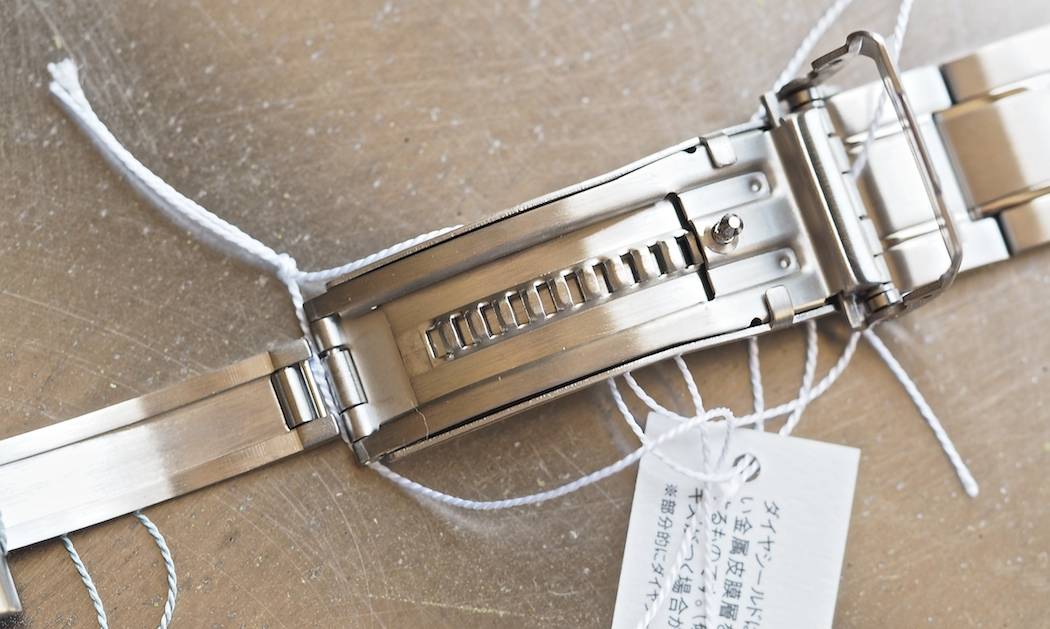
A look at the micro-adjust on the bracelet of the Seiko MM300. It may not look pretty but it works very well.
However, while I agree with R-J that the sliding/ratcheting micro-adjust looks like something stamped out of a heavy tool & die shop out of, say, Cleveland, Ohio, it’s damn functional, well-made and, besides, who sees it anyhow once the bracelet is closed? Plus, the rest of the bracelet does feel solid to me from the clasp to the solid end links. I draped it on the wrist and found it very comfortable and non hair-pulling (that’s a big deal for me). So, in the end, I’d probably wear the bracelet or find an aftermarket rubber strap. As you can see, though, I paired the MM300 with a 20mm NATO strap – a change made easy by the always appreciated, yet rarely seen, cross-drilled lug holes.
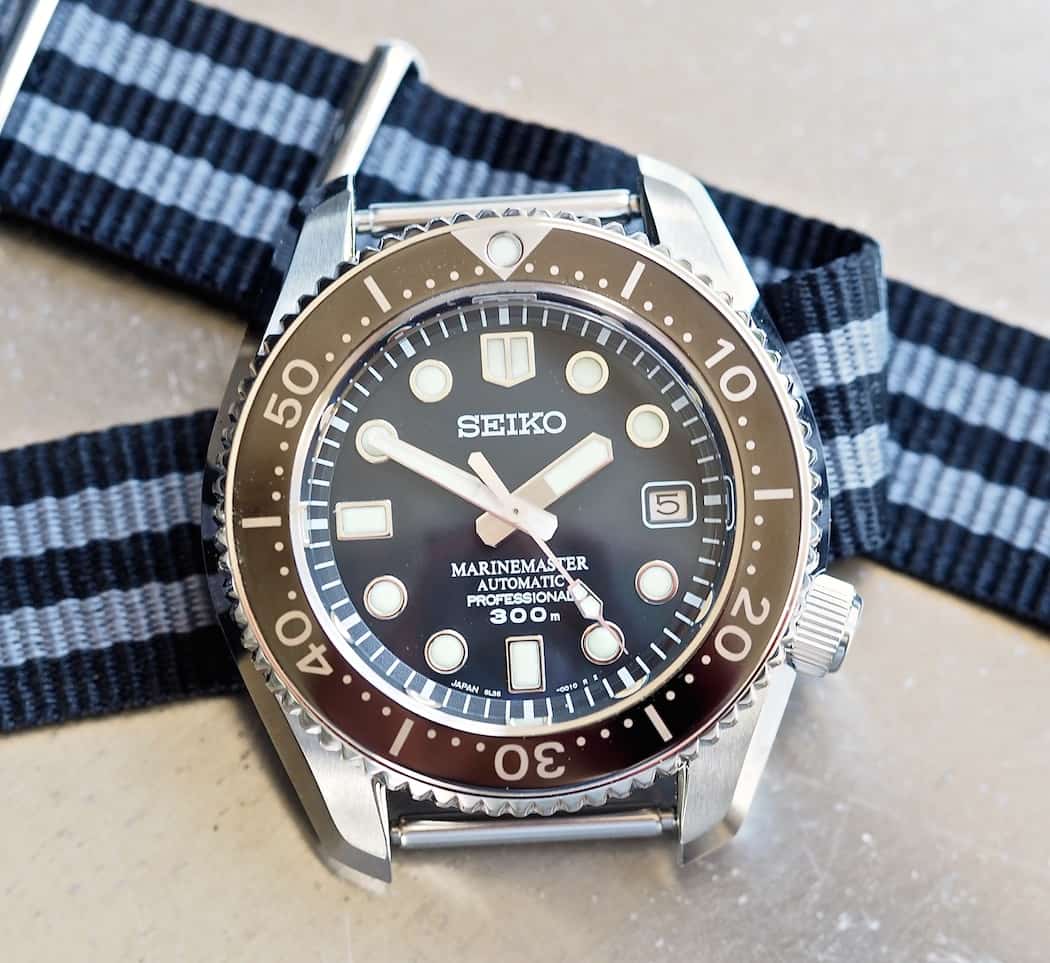
The Seiko MM300 did exclusive duty on a NATO – and looked great!
Taking a closer look at the Seiko MM300, it has an amazingly deep-set dial with big, bold applied indices. Also, despite it looking relatively small, it’s very legible.
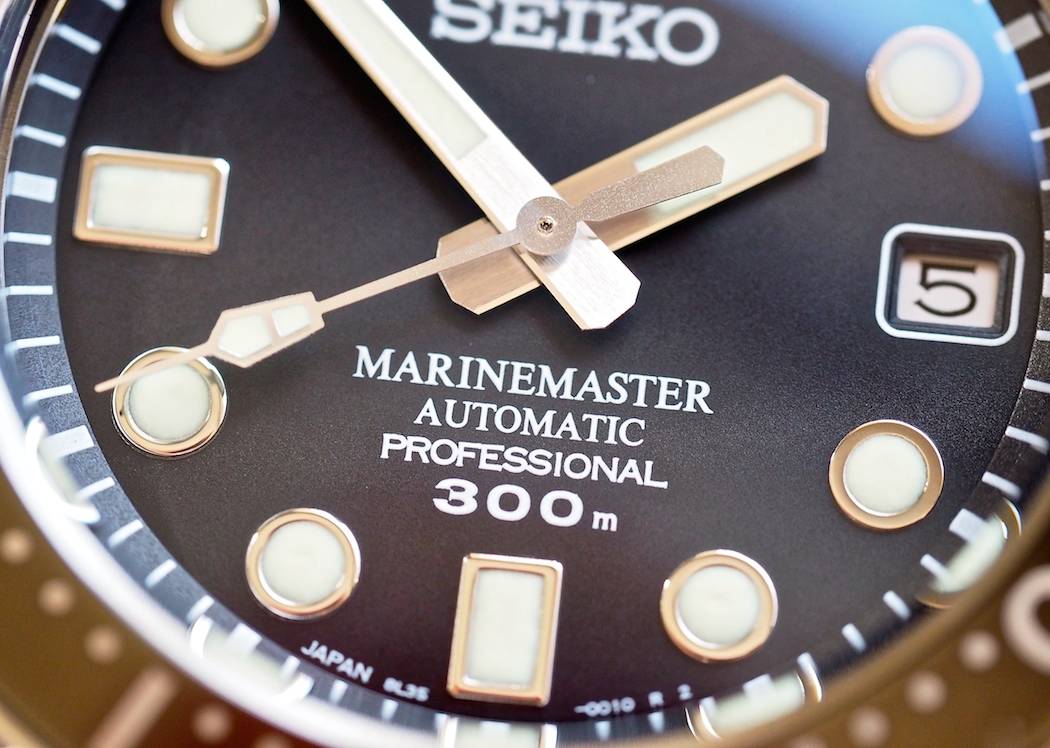
Just look at the quality of the Seiko MM300 dial – it’s flawless
A closer look at the hour indicators plus a peep at the large hands shows that the attention to detail on this watch is damn near ridiculous. I’ve focused on this tight tolerance finishing with Grand Seiko before and it’s not far off the mark in this sporty application – I can only imagine how ridiculous the GS divers must be!
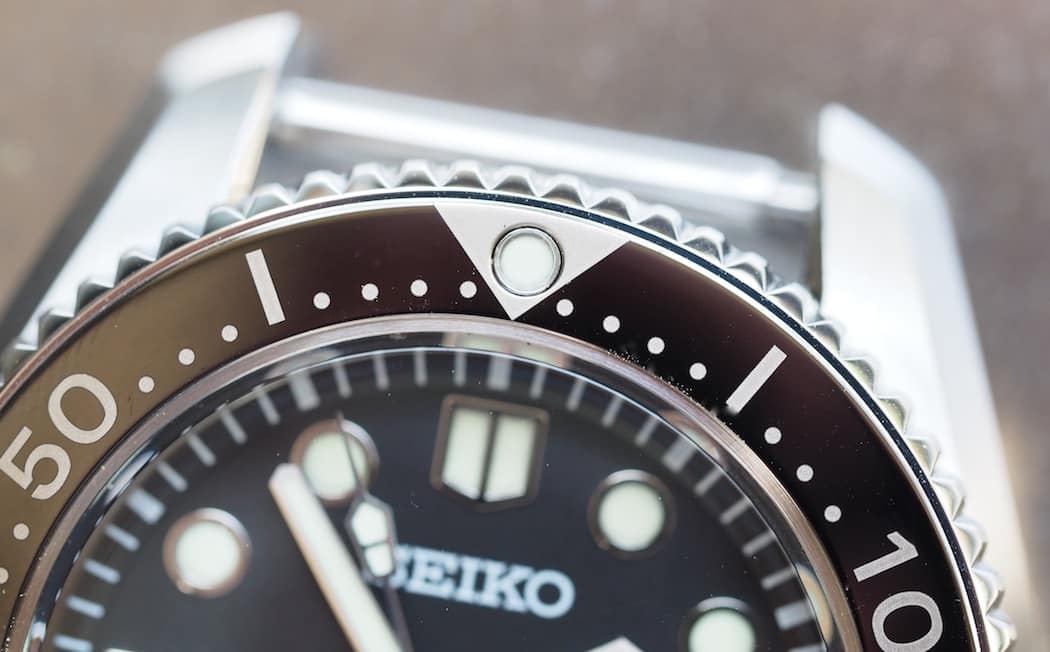
The bezel on the Seiko MM300 is painted onto the steel and it’s wonderfully glossy and looks almost ceramic
This same precision follows on the outside in the case polishing and the flawless, ceramic-looking (it’s painted), bezel. Speaking of the bezel, turning it is a heavy-weighted affair that oozes quality; it’s one of the most typical questions I’m asked by folks who actually use this style of watches for their subterranean hobby. I’m also a fan of the rarely seen monobloc case (the movement loads via the front).
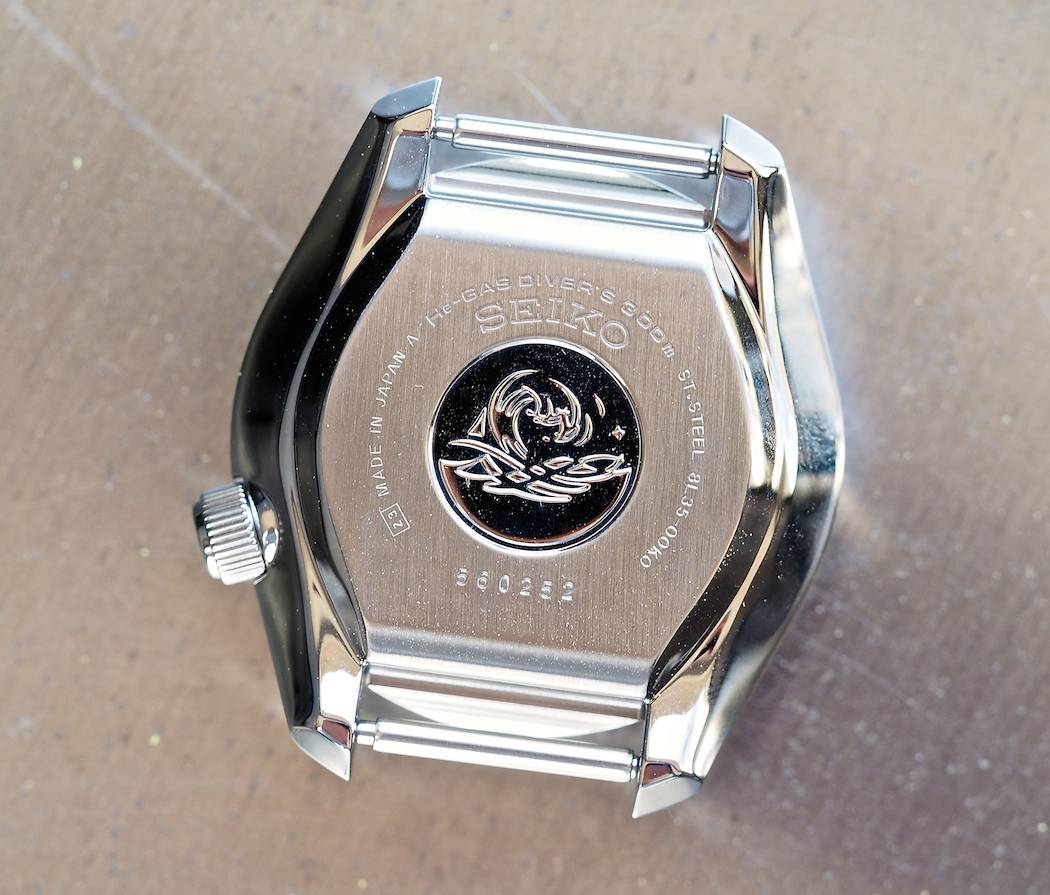
The trademark tsunami motif finds its way on the monobloc case of the Seiko MM300
There’s something neat about flipping a watch over and being met with a flat palette of a case back that, in this episode, is adorned with the brand’s well-known tsunami motif. Sure, it hinders accessibility to all but trained watchmakers, but who goes in and plays with an automatic watch anyhow? Plus, it speaks to Seiko’s commitment to 300m of water resistance by designing a watch with one less seal to breach. I’d say my only niggle functionally is the screw-down crown. I’m not sure why but I always find Seiko to employ what feels like very narrow threads that I’m concerned about stripping. I think part of this relates to the fact that the watch was brand-new and they may just take time to seat.
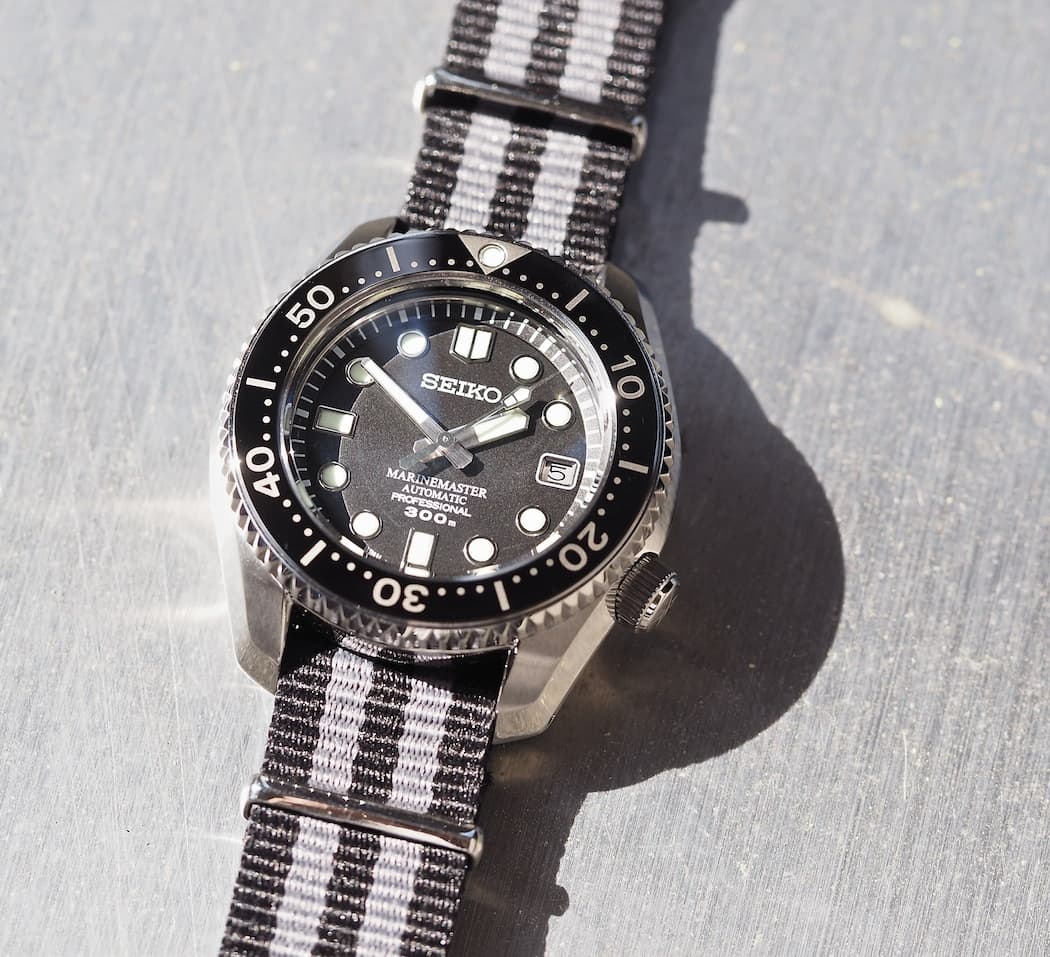
Despite a case diameter of 44mm, the Seiko MM300 doesn’t wear so large. Credit those short lugs.
So, I mentioned that the Seiko MM300 sports a 44mm diameter case. Like most Seikos, though, this watch wears down 3-5mm due to its short lugs and the comparatively small dial. The dial looks small due to its depth, the thickness of the Hardlex and the relatively thick bezel.
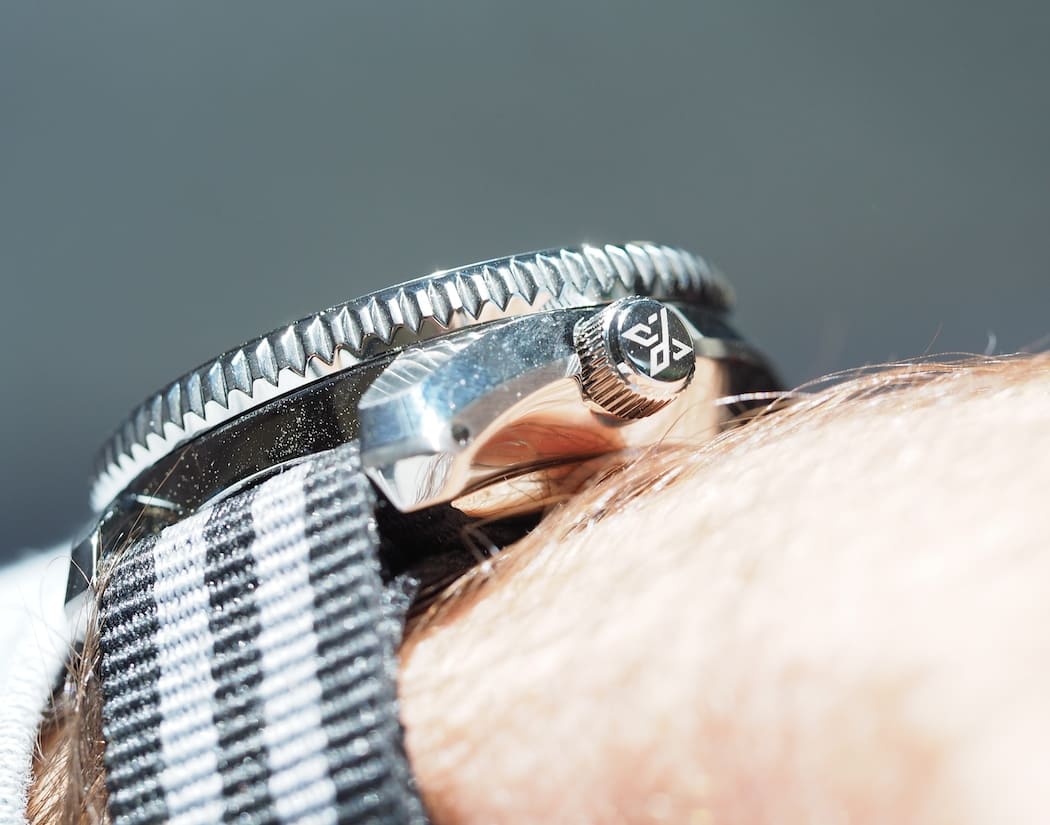
Note the height of the Seiko MM300 on my wrist – it’s tall at roughly 14.5mm thick.
Related to this, and this is probably my biggest beef with this watch, it is thick. Sure, when one buys a Seiko Tuna, a thick hockey puck of a watch is to be expected, but if an all-arounder is in the cards, a watch that can do double duty as a beachcomber or office roamer typically demands some subtlety as far as height. Here, at 14.5mm in thickness, the watch towered a bit too much for my liking. Yes, I had two thin layers of nylon underneath the case back, so I did not help the situation, but this is still a tall one. It’s certainly forgivable and perhaps made a little better with the bracelet, but if I compare this watch to one of my favorites, the Rolex Submariner 14060m, it rings in with a thickness of 12.2mm. That’s a big difference and there’s no difference in depth performance. Of course, there is the matter of price.
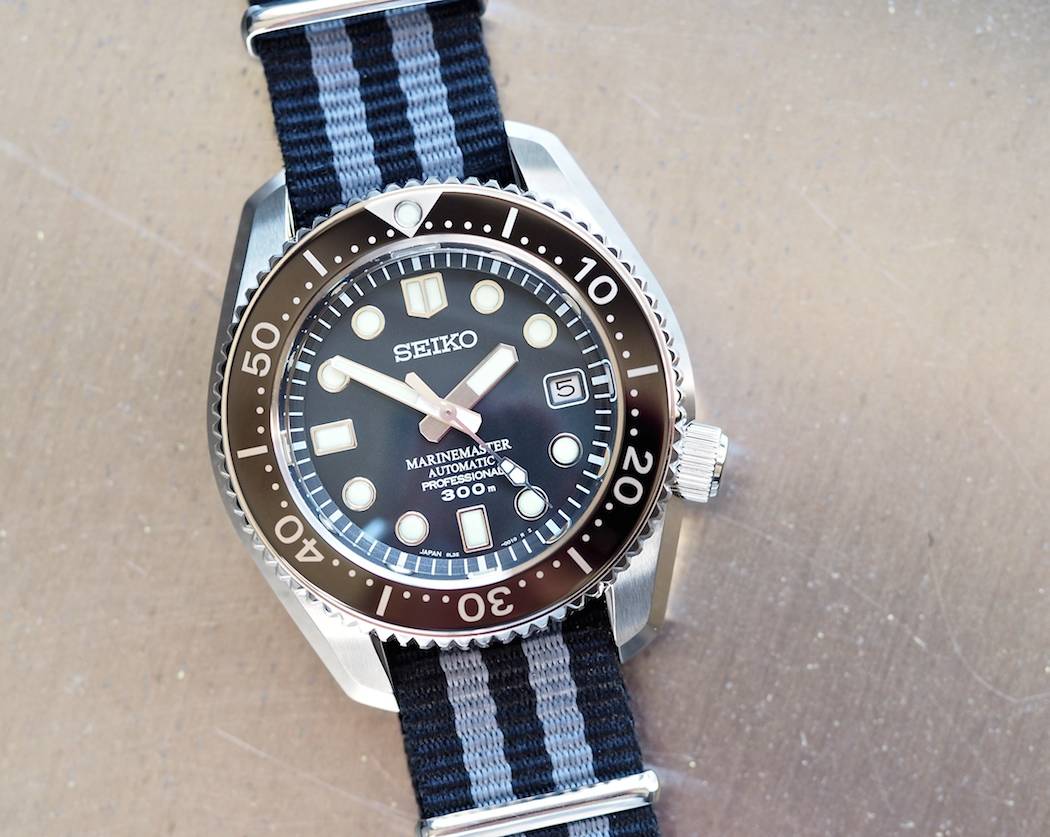
See the beautiful matte top finishing on the case of the Seiko MM300 and polished sides – they’ll keep their form due to the new application of DiaShield.
When talking about price, I mentioned that the Seiko MM300 lists for 2350 Euros (Update 2018: last known list price in Europe was 2500 Euro) in Europe and can be found for even less (one would say far less) in Japan. I won’t sit here and tell you how to rationalize any price for any watch above 1000 Euros, but what I will say is that this piece offers a ridiculous amount of value for the money. It comes with everything one needs (strap plus bracelet), is 100% in-house made, and due to the addition of DiaShield, should look great for years to come. Plus, in dive watch circles, it’s a no-apologies piece that no one would fault you for buying – if that’s somehow a concern. For sure, it’s a cheaper alternative to a Rolex if you don’t have the cash, but I don’t think it’s necessarily a poorer substitute. No, it could easily do a lifetime of duty and, as a bonus, allow the owner to avoid the hairy eyeball of would-be thieves wherever one may travel.
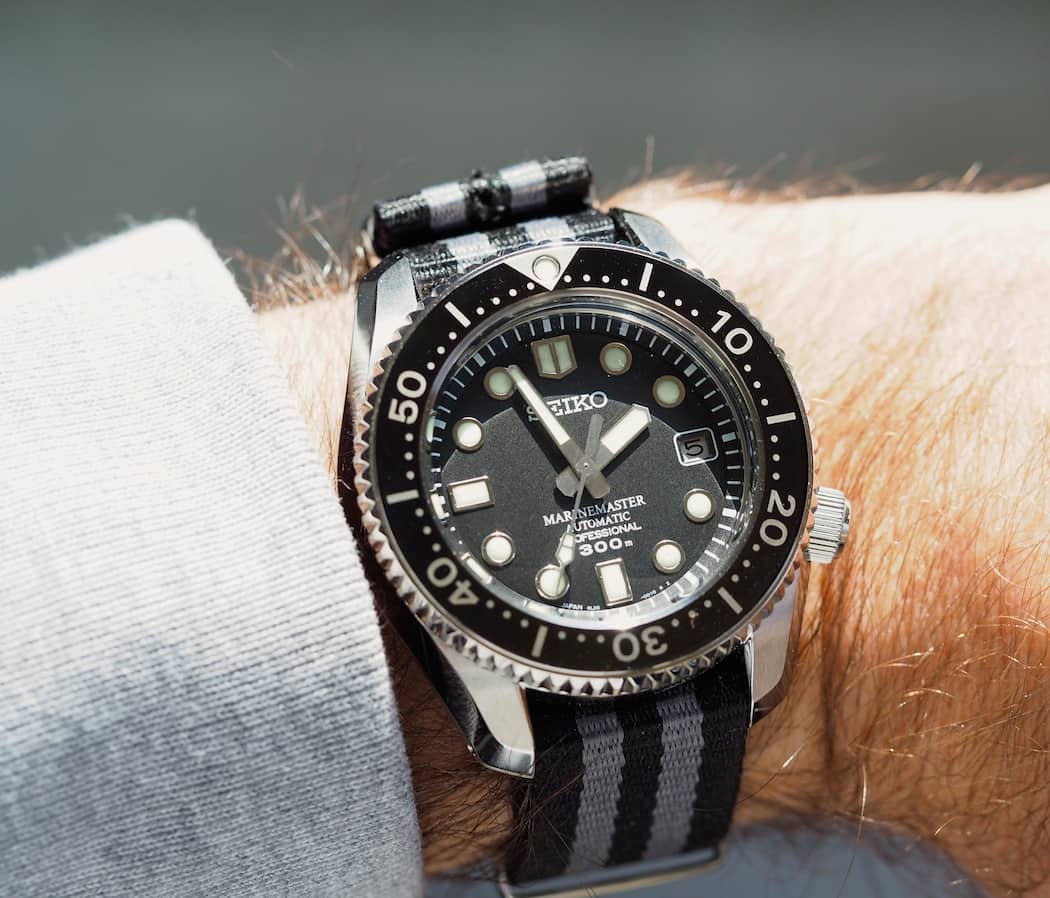
Depsite a large case size, the Seiko MM300 fit my smaller wrist very well.
Regarding the competition, there are many contenders. Longines, with its Hydroconquest, jumps out as a low cost alternative and I suppose one could say that it’s “in-house” with its ETA movement. If we’re using the 2350 Euros as a guideline, one might even consider a Doxa, any number of Sinns, other Seikos or an Oris. This is crowded territory and while all are fine choices, I think that the Seiko MM300 deserves its place in the upper tier due to its heritage, its seriousness and build quality. Coming back to Robert-Jan’s wearing of the watch at hoity toity events, I also really do like that this piece makes no accommodations for fashion reasons yet somehow still works.
Coming back to the final question of whether or not I will seek to add a Seiko MM300 to my collection. It’s a great question and I think that after wearing it, really thinking about the piece and writing about it, I think I’ll have own one at some point. Will I buy an earlier SBDX001 or the newest SBDX017? First off, after a quick glance on eBay, you’ll note that these watches lose very little on the secondary market, so “stealing” one is unlikely. To me, it doesn’t really matter and to those who are “poo-pooing” the latest updates? Get past it, curmudgeons, as they’re almost invisible, but they’re thoughtful. Seiko didn’t add all sorts of clutter to a classic. They made the watch more durable and precise and that’s a good thing for buyers – especially as the brand seeks to introduce this watch to more and more markets around the globe. Make no mistake, the Seiko MM300 is a true classic and is absolutely deserving of its lofty reputation.
For more information, see https://www.seiko.nl/ and a big thanks again to them for the use of this fantastic timepiece.
























